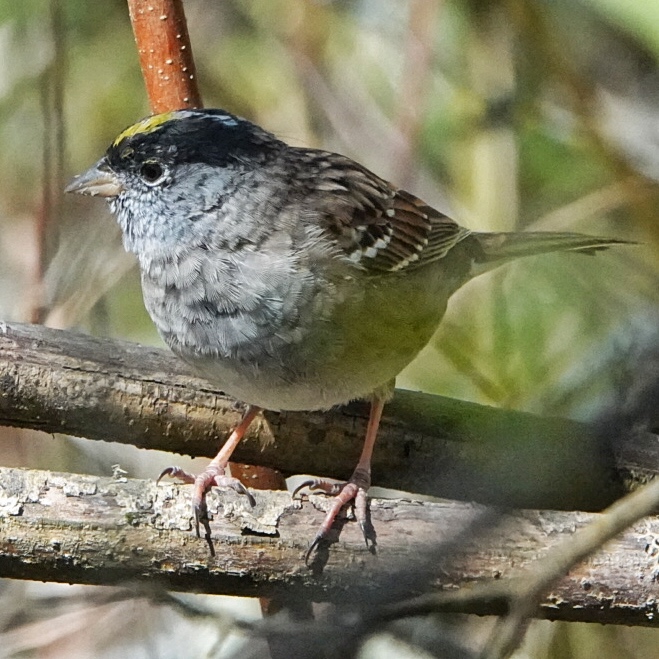
Let me start out by saying that Golden-crowned Sparrows are my favorite sparrows. I do most of my birding during the winter, and they are abundant then. They are also big (by sparrow standards), handsome, distinctive and easily identified, social enough that there are usually several together, active and entertaining to watch, and they are brave enough not to flee when I’m 30’ away.
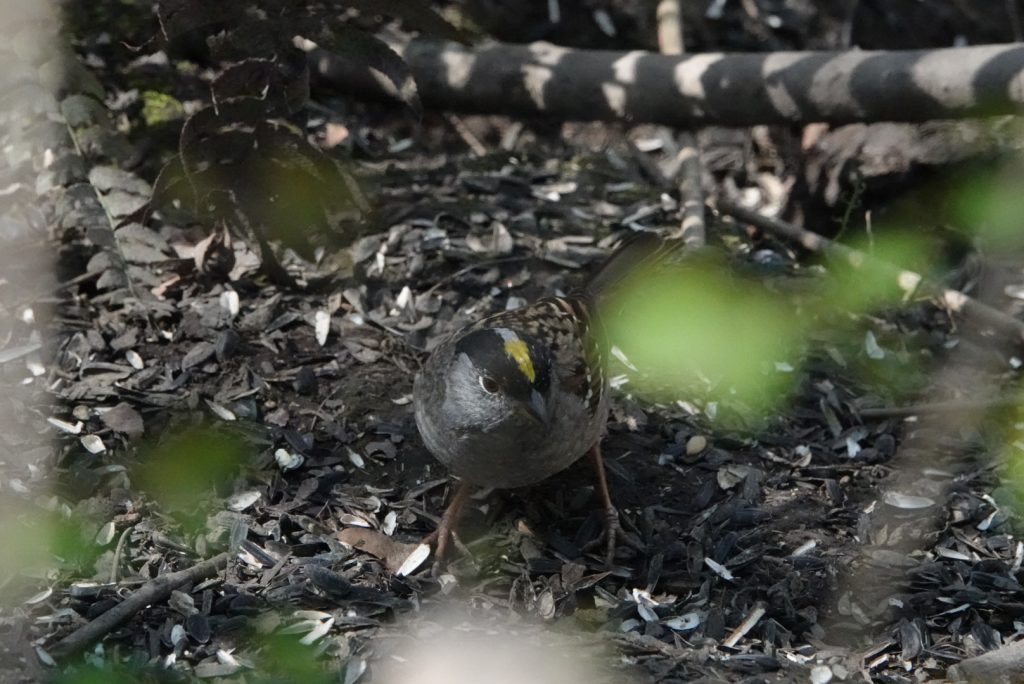
I thought this was a good time for a post about Golden-crowned Sparrows because they will all be leaving soon. As near as can be told all breeding by Golden-crowneds happens in BC, the Yukon Territory, and Alaska. There will still be stragglers coming up from California, but one morning soon it will be like someone flipped a switch, and all of the delightful Zonotrichia atricapilla that we’ve been watching all winter will be gone.
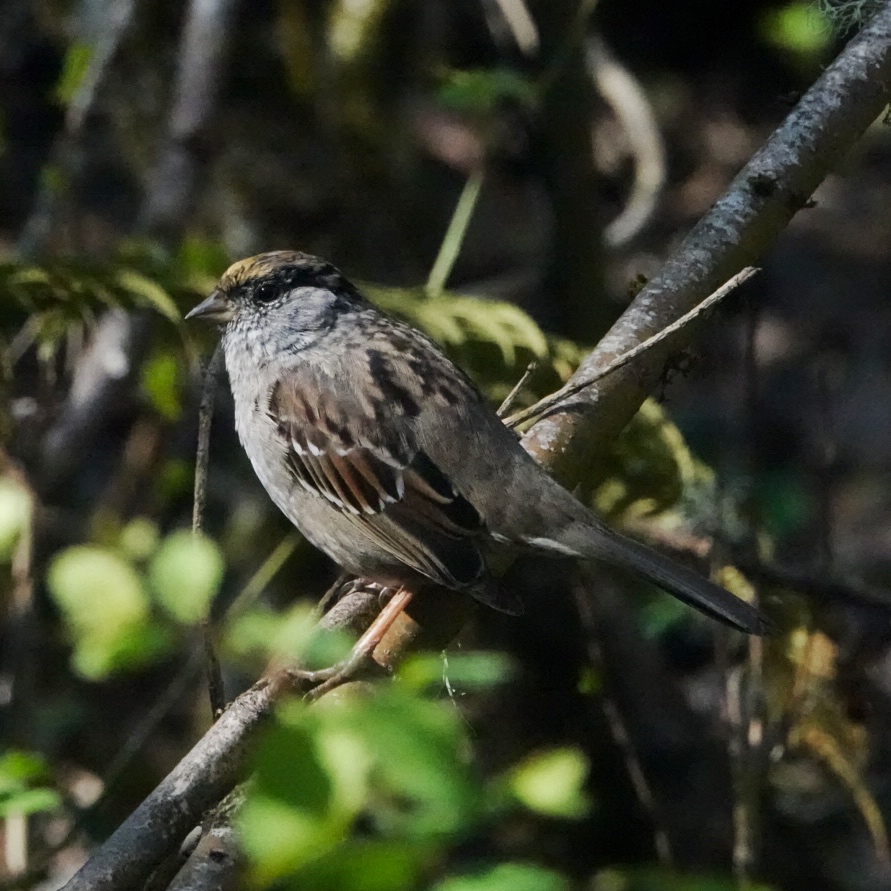
Not much is known about the breeding habits of Golden-crowned Sparrows, but one small study showed that the males sing almost continuously while the females laid eggs, but were silent as soon as the female began to incubate them. Both males and females were active delivering food to the nestlings, and both removed fecal sacs from the nest.
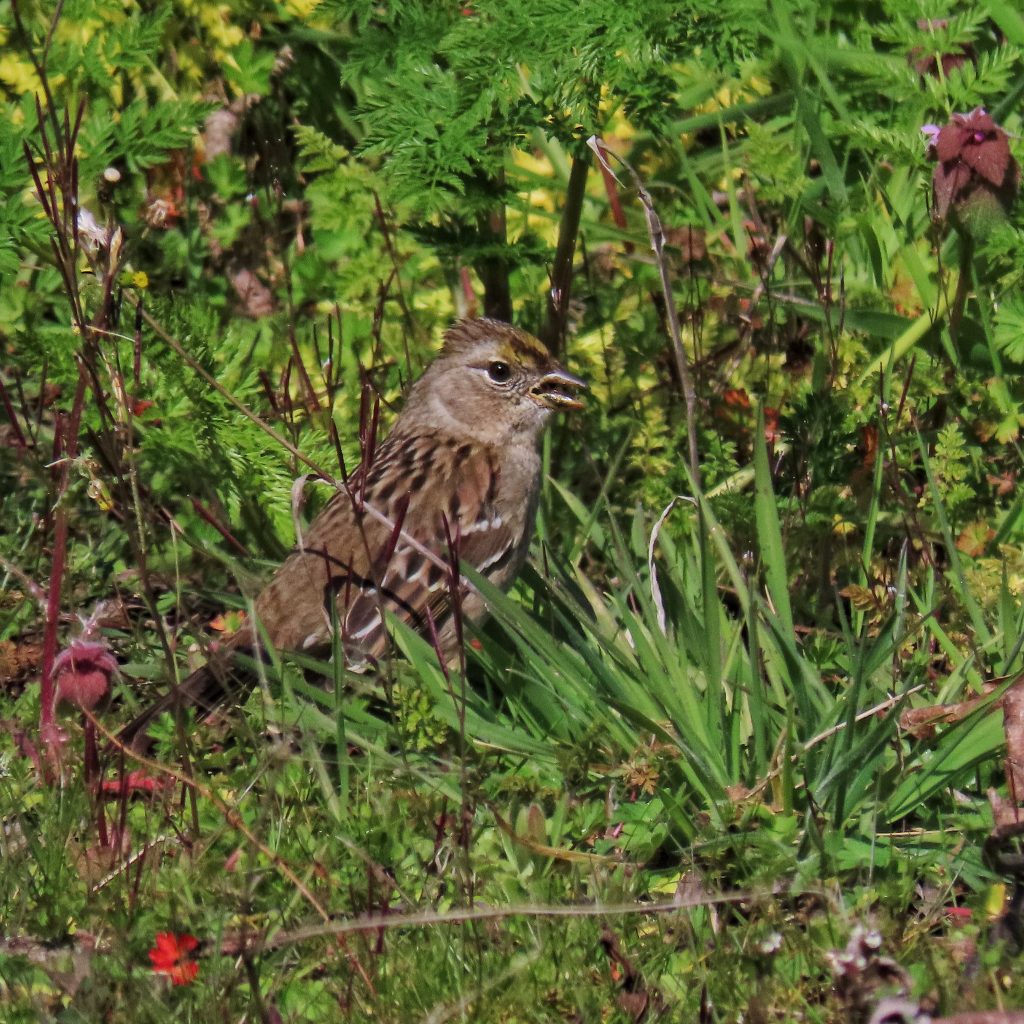
Miners in the goldfields of the Yukon had two names for this bird, both of which were based on the sound of its calls. Some disillusioned miners called it the ‘no gold here’ bird because they thought that’s what the call sounded like. While others heard a mournful ‘I’m so tired’ and called them Weary Willy.
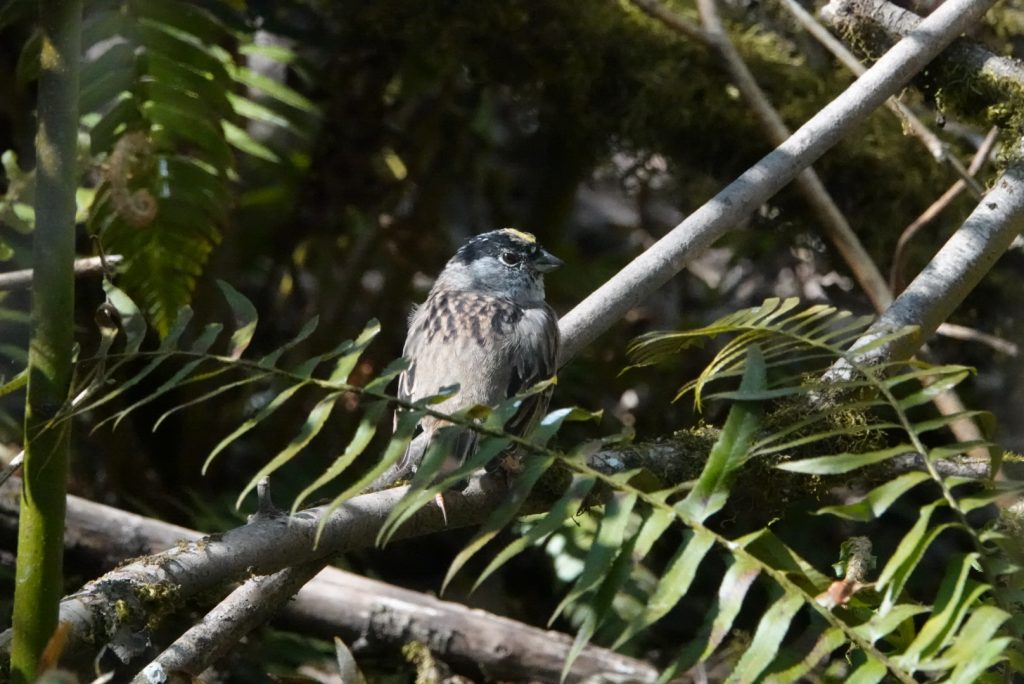
Description– Large (up to 7.25” tall) stocky sparrow with a grey cheek, belly, and unstreaked grey breast; back is brown and wings are black and brown; head ranges from golden brown crown with brown eyebrow and grey bill in winter, to the crown being bright yellow in front and white behind, with a black eyebrow and bicolored bill during breeding.
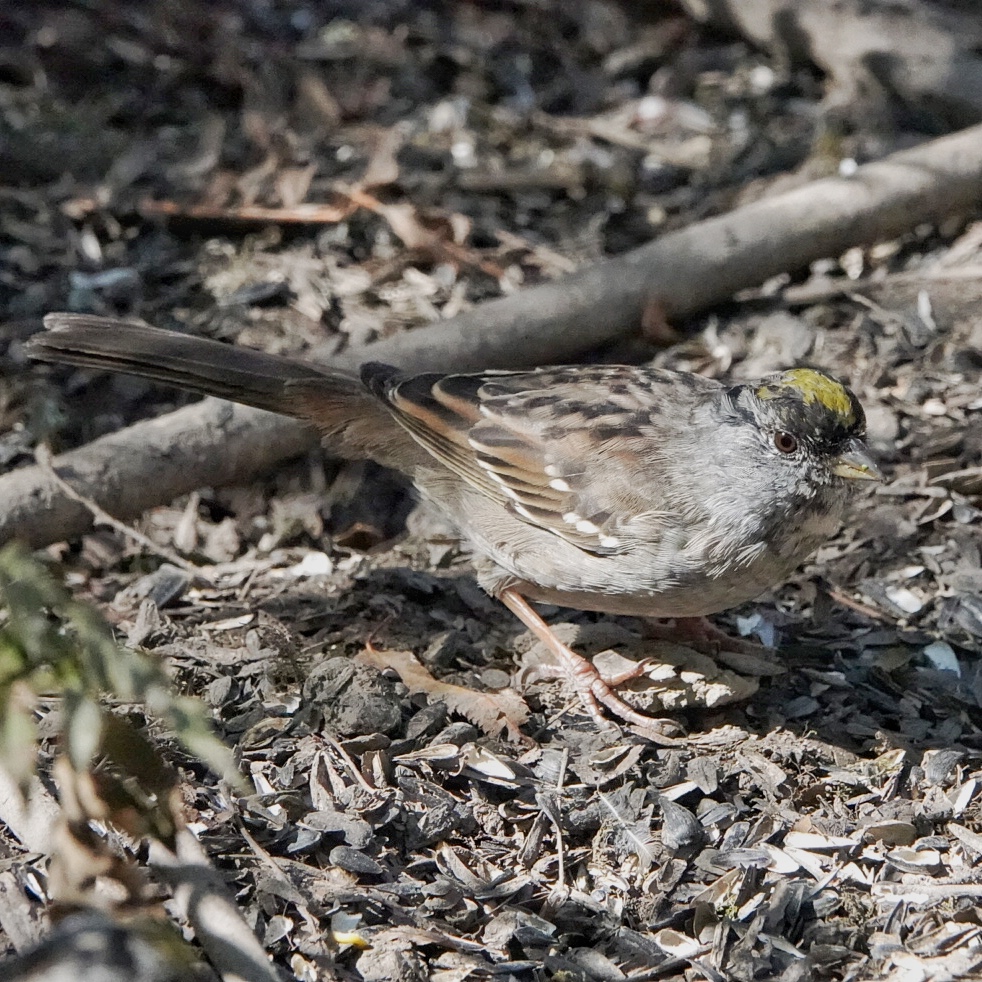
Similar species– White-crowned Sparrows have the eponymous white crown, a white or light brown eyebrow, pink to orange beak; White-throated Sparrows have a white to light gray throat patch, white eyebrow, yellow lores; immatures of all three species best separated by using a good birding field guide; for pure identification I really like Sibley’s book, but there are many good ones out there.
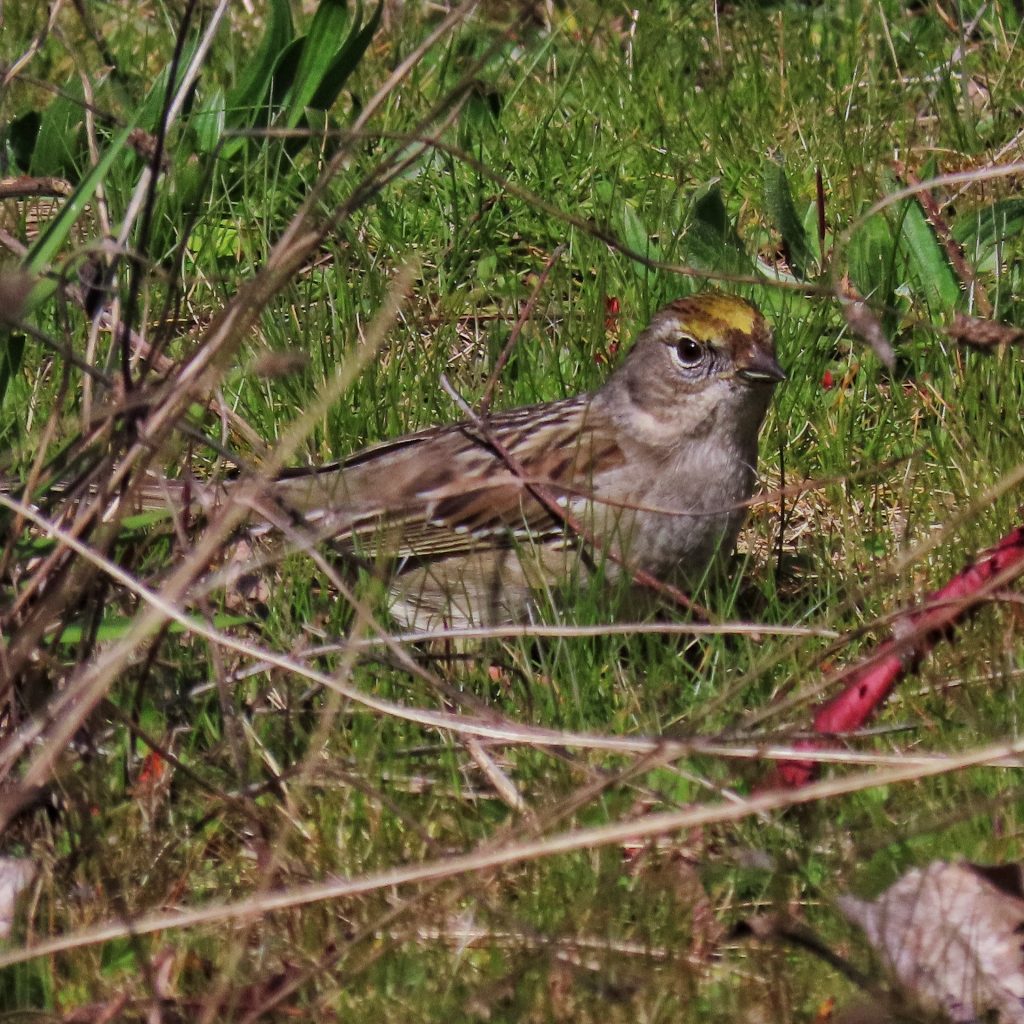
Habitat– Brushy areas; especially common around blackberry thickets in wintertime.
Range– West Coast; breeds in BC, Yukon , Alaska; can be found region wide during migration; winter populations are primarily lower elevations west of the Cascades.
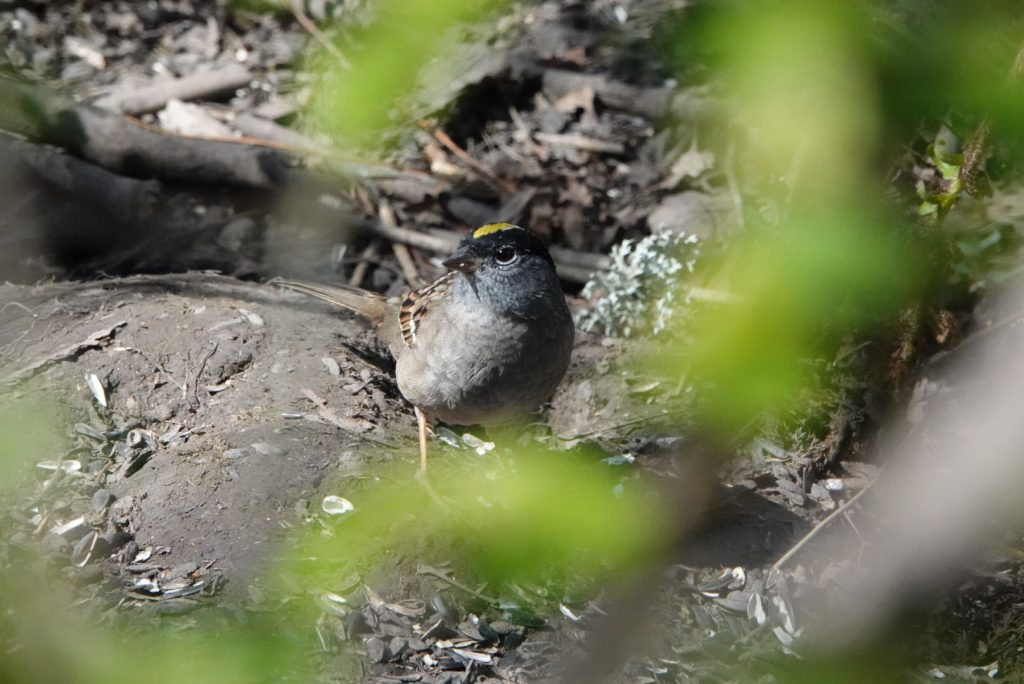
Eats– Seeds, fruits, vegetation and insects; seem to prefer flowers, sprouts, and insects when available.
Eaten by– Carnivorous mammals of most species will prey on the young; Accipiters, owls, and shrikes prey on young and adults.
Reproduction-Nests are built in a depression on the ground under overhanging vegetation in scrublands and tundra; nests are constructed with coarse grass, ferns, and twigs, and lined with fine grass and fur or feathers; usually lay 3-5 eggs which hatch in 11-13 days, and the altricial young fledge in 9-10 days.
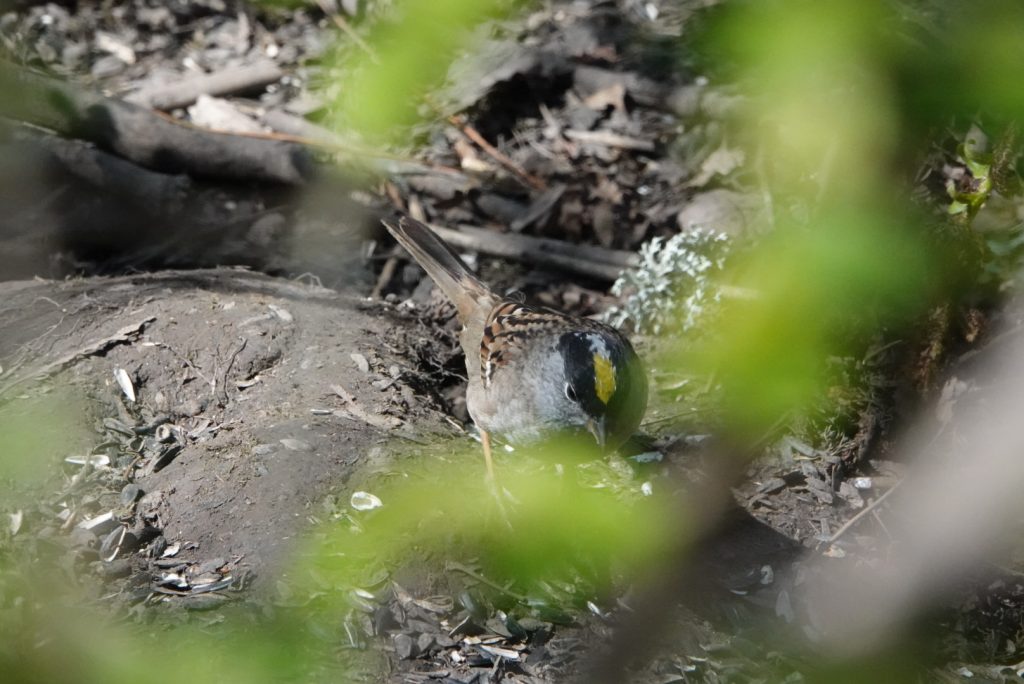
Adults active– Virtually all of our region’s Golden-crowneds will have left for Alaska and BC by mid May. They will begin returning in September.
Etymology of names–Zonotrichia is from the Greek and translates as ‘hair bands’, in reference to the distinctive bands of color on the heads of birds in this genus. The specific epithet atricapilla means ‘black hair’ in Latin, and probably refers to the black band of feathers between the eye and the crown.
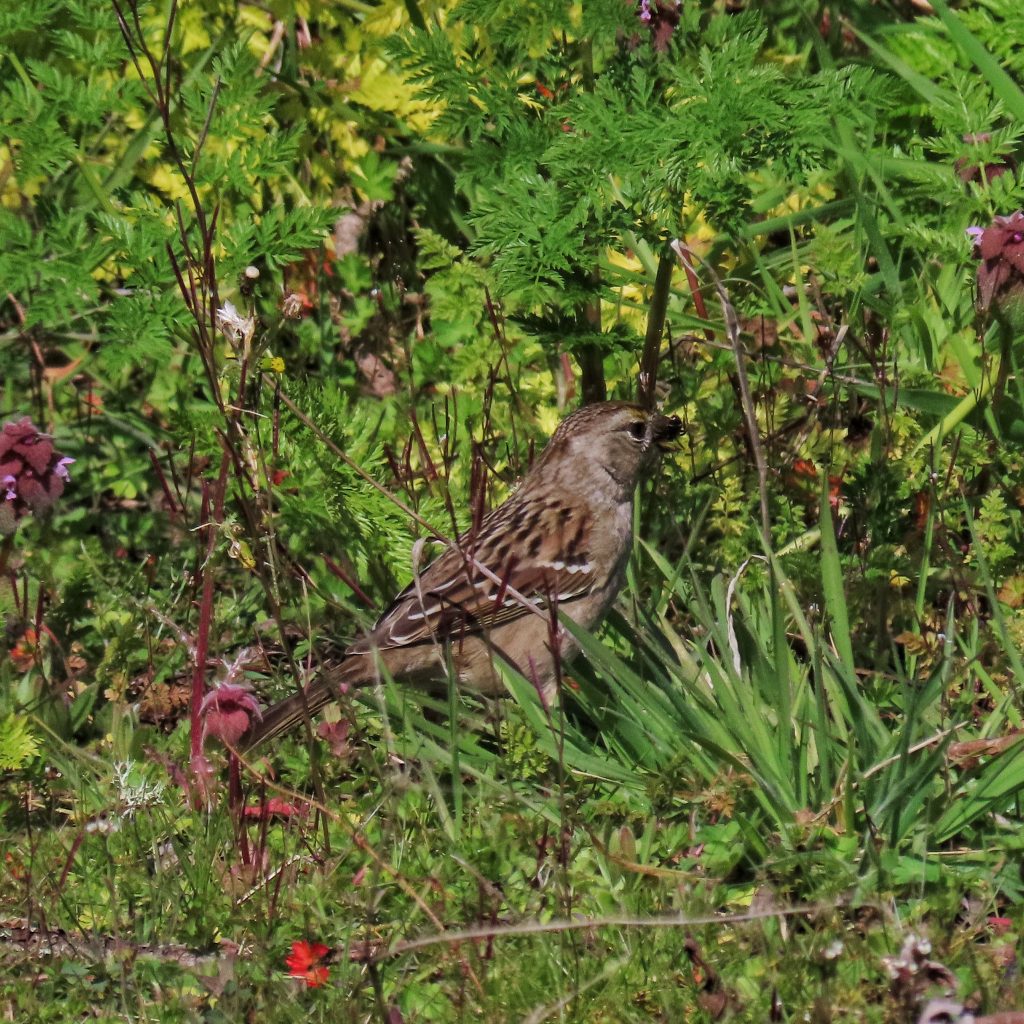
https://www.allaboutbirds.org/guide/Golden-crowned_Sparrow/overview
https://www.allaboutbirds.org/guide/Golden-crowned_Sparrow/id
https://www.audubon.org/field-guide/bird/golden-crowned-sparrow
https://animaldiversity.org/accounts/Zonotrichia_atricapilla/
https://www.centralcoastbiodiversity.org/golden-crowned-sparrow-bull-zonotrichia-atricapilla.html
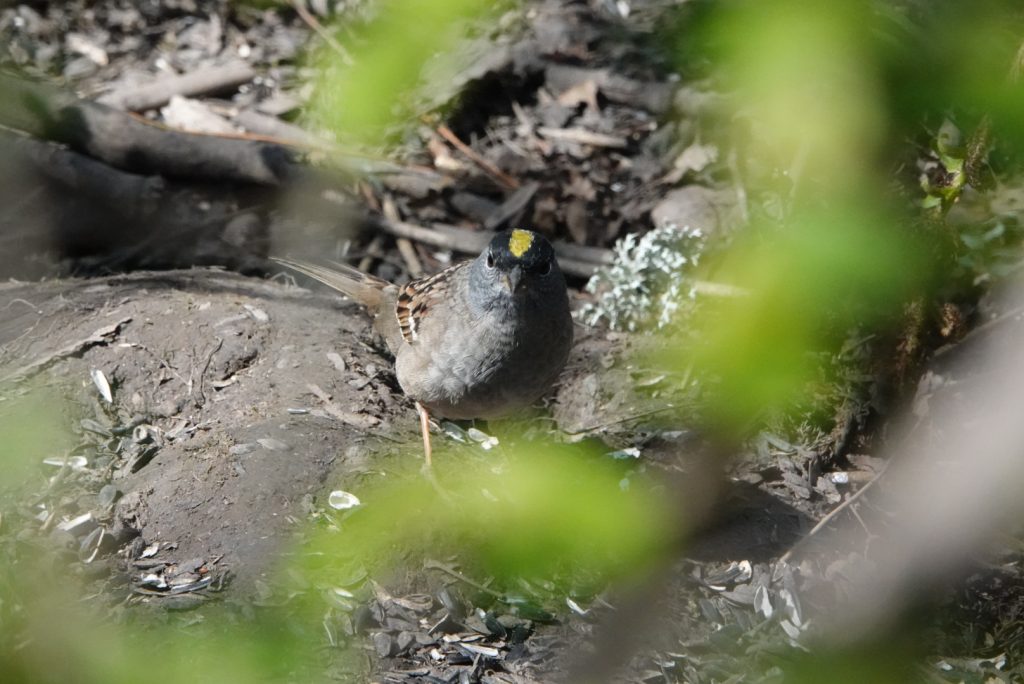
It always amazes me that birds expend so much energy migrating such great distances. Are you aware of any reference that addresses this evolutionary adaptation?
They think it has to do with the retreat of the glaciers. Birds from the tropics kept moving farther north to breed, and birds from Alaska, most of which was oddly never glaciated, kept moving farther south in winter. At least that’s the theory I heard some years ago.